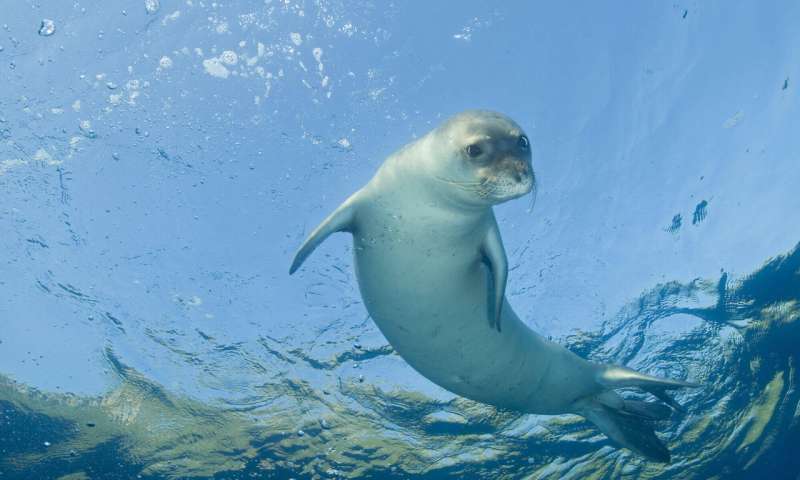Endangered Mediterranean monk seals aided by unique intervention

Conservationists are celebrating exciting new footage that reveals an endangered Mediterranean monk seal making use of an artificial breeding ledge they have created to aid in the species' recovery. The footage, which shows a young adult female, is the first time that this species has been recorded using an artificial ledge, raising hopes that this unique habitat restoration effort will boost efforts to save monk seals from extinction.
Mediterranean monk seals breed in caves within Gökova Bay, part of the Aegean Sea off the south-west coast of Turkey, over 300 square kilometers of which is an actively managed marine protected area. Historically, monk seals would have hauled out on beaches across the Mediterranean to breed, but human disturbance, persecution and predation have pushed them to more marginal habitats such as marine caves. In recent years earthquakes in the area have collapsed a number of caves, reducing suitable breeding sites. Due to these cave collapses, loss of beach habitat and successful conservation efforts that have resulted in a growing monk seal population, there are now more seals than there are suitable breeding caves in the bay, hindering their further recovery. Until conservationists intervened, only three suitable breeding caves could be found across the entire 400 km stretch of coastline in Gökova Bay.
The species needs very specific light conditions and a small, sheltered pool within the cave where mothers can teach their pups how to dive and feed—as well as a dry ledge to give birth on. With support from Fauna & Flora International (FFI), the artificial ledge was constructed by Akdeniz Koruma Derneği (AKD) conservationists in August 2019 and a young adult female monk seal was found to be using it in February this year.
A novel approach to seal conservation
The creation of an artificial ledge for seals to use within caves has not been tried in the Mediterranean before and it is hoped that it can be replicated in other areas along the coastline. The conservationists have identified other caves that are suitable for the installation of an artificial ledge.
"We were incredibly excited when we found a seal using our artificial ledge for the first time," says Zafer Kizilkaya, AKD President. "As an endangered species, Mediterranean monk seals need all the help they can get from conservationists, and the lack of breeding sites challenged us to think creatively about how to solve this problem. The installation of an artificial ledge for a monk seal is a first in the Mediterranean but we hope it will not be the last—we have identified other caves and will be looking to install further ledges. We hope Gökova Bay will be home to many more seal pups in the years to come."
The female has made the cave her home and the hope is she will use it to give birth in—this season or in future breeding seasons—and use it to raise her pups. Unlike other seal species that have weaning periods of mere days, the weaning period for a Mediterranean monk seal is around four months.
It is thought that there are as few as 400 adult Mediterranean monk seals remaining globally, mainly in a small fragment of their original range between Turkey and Greece. The primary threats to these seals are habitat loss and deliberate killings by fishers who resent the damage they can cause to fishing nets. Conservationists have worked hard with the fisher community over many years, raising awareness and driving educational efforts, and as a result this threat has been significantly reduced.
Provided by Fauna & Flora International




















